
Hollein Calling - výstava v AzW
Dialogy o architektuře
Pořadatel
Architekturzentrum Wien
Místo konání
AzW, Museumsplatz 1, Vídeň
Start
thu 21.9.2023 10:00
End
mon 12.2.2024 19:00
Odkaz
www.azw.at/en/event ...
Architekturzentrum Wien
Místo konání
AzW, Museumsplatz 1, Vídeň
Start
thu 21.9.2023 10:00
End
mon 12.2.2024 19:00
Odkaz
www.azw.at/en/event ...
Exhibitions
Austria
Wien
Hans Hollein
Publisher
Petr Šmídek
Petr Šmídek
In the autumn of 2023, the Vienna Az W organized an exhibition dedicated to the only Austrian recipient of the Pritzker Prize, thus prematurely commemorating ten years since the passing of this prominent representative of the postmodern wave. According to Angelika Fitz, the current director of Architekturzentrum Wien, “there is more Hollein in contemporary architecture than one might think”.
Unlike the extensive retrospective exhibition simply titled HOLLEIN, which took place in the summer of 2014 in the sumptuous historic halls of MAK designed by Heinrich von Ferstel, the current exhibition Hollein Calling installed in the baroque space of the former horse stables by Fischer von Erlach focuses on Hollein's legacy left in the current generation of European architects. The trio of curators Lorenzo De Chiffre, Benni Eder, and Theresa Krenn reached out in 2019 under the research grant Dialogues on Hans Hollein to fifteen contemporary European studios (including, for example, the Italian baukuh, Belgian Bovenbouw, Dutch Monadnock, German Kuehn Malvezzi, Swiss Conen Sigl, Norwegian Manthey Kula, or English David Kohn) to attempt to relate to and possibly find parallels with Hollein's work. Through examples of their work, they demonstrate that playfulness has not left architecture with postmodernism.
Hollein's influence was not only through projects and media outputs but also through a long-term presence in academia. Since the mid-1970s, he was behind the transformation of the Vienna University of Applied Arts into the internationally recognized dieAngewandte, which has been attended by several Czech architects, and thanks to Jan Tabor and Bořek Šípek, we also had representation in the stellar teaching staff. Besides the Vienna scene, Hollein was active at foreign universities, as evidenced by video recordings in the exhibition hall, where Hollein speaks to students at ETH Zurich or the AA in London.
For Hollein, architecture was everything, and he did not reserve it for holidays. Hollein's famous quote from 1968, that “everything is architecture” preceded Joseph Beuys' provocative statement that “everyone is an artist”. Dietmar Steiner, founder and long-time director of Az W, placed Hollein in the post-war generation of “enlightened resistance” during the retrospective exhibition in 1995, which included, among others, Coop Himmelb(l)au, Haus Rücker Co, Zünd Up, or Missing Link, who sought inspiration beyond Austria's borders, and in Hollein's case, across the ocean to the USA, returning filled with technological optimism and faith in the future. According to American architect with Hong Kong roots Mark Lee (currently also a professor and director of GSD at Harvard University), Hollein was “a curator of cultural events”, who did not settle for just designing a building down to the smallest detail, but when given the opportunity, he also planned the social use and roles of individual users, for which he would receive criticism from another prominent figure of the Vienna architectural scene Adolf Loos.
In the installation, the curators tried to avoid a linear interpretation of Hollein's work or dividing the exhibition by individual projects. From the extensive archive, they selected fifteen key Hollein buildings dating from the mid-1960s to the early millennium. While they chose a classic presentation on eight large tables, to grasp the extensive work, they defined twelve themes: exhibition, photography, furniture, materials, city, models, references, art, education, collaboration, publishing, and form. Many exhibits from Hollein's extensive archive, which MAK in collaboration with Az W acquired in 2016 on 263 pallets, were publicly displayed for the first time. The extensive collection, consisting of over 460 projects, hundreds of models, and tens of thousands of photographs, drawings, sketches, and correspondence, has been consistently cataloged for several years.
Since 2016, the Austrian government has been awarding the Hans Hollein Prize for Art, with the first recipient being Hermann Czech, and every year it also announces two scientific grants primarily intended for studying Hollein's work, ensuring that we can continue to look forward to new discoveries, exhibitions, and publications.
More information >
Unlike the extensive retrospective exhibition simply titled HOLLEIN, which took place in the summer of 2014 in the sumptuous historic halls of MAK designed by Heinrich von Ferstel, the current exhibition Hollein Calling installed in the baroque space of the former horse stables by Fischer von Erlach focuses on Hollein's legacy left in the current generation of European architects. The trio of curators Lorenzo De Chiffre, Benni Eder, and Theresa Krenn reached out in 2019 under the research grant Dialogues on Hans Hollein to fifteen contemporary European studios (including, for example, the Italian baukuh, Belgian Bovenbouw, Dutch Monadnock, German Kuehn Malvezzi, Swiss Conen Sigl, Norwegian Manthey Kula, or English David Kohn) to attempt to relate to and possibly find parallels with Hollein's work. Through examples of their work, they demonstrate that playfulness has not left architecture with postmodernism.
Hollein's influence was not only through projects and media outputs but also through a long-term presence in academia. Since the mid-1970s, he was behind the transformation of the Vienna University of Applied Arts into the internationally recognized dieAngewandte, which has been attended by several Czech architects, and thanks to Jan Tabor and Bořek Šípek, we also had representation in the stellar teaching staff. Besides the Vienna scene, Hollein was active at foreign universities, as evidenced by video recordings in the exhibition hall, where Hollein speaks to students at ETH Zurich or the AA in London.
For Hollein, architecture was everything, and he did not reserve it for holidays. Hollein's famous quote from 1968, that “everything is architecture” preceded Joseph Beuys' provocative statement that “everyone is an artist”. Dietmar Steiner, founder and long-time director of Az W, placed Hollein in the post-war generation of “enlightened resistance” during the retrospective exhibition in 1995, which included, among others, Coop Himmelb(l)au, Haus Rücker Co, Zünd Up, or Missing Link, who sought inspiration beyond Austria's borders, and in Hollein's case, across the ocean to the USA, returning filled with technological optimism and faith in the future. According to American architect with Hong Kong roots Mark Lee (currently also a professor and director of GSD at Harvard University), Hollein was “a curator of cultural events”, who did not settle for just designing a building down to the smallest detail, but when given the opportunity, he also planned the social use and roles of individual users, for which he would receive criticism from another prominent figure of the Vienna architectural scene Adolf Loos.
In the installation, the curators tried to avoid a linear interpretation of Hollein's work or dividing the exhibition by individual projects. From the extensive archive, they selected fifteen key Hollein buildings dating from the mid-1960s to the early millennium. While they chose a classic presentation on eight large tables, to grasp the extensive work, they defined twelve themes: exhibition, photography, furniture, materials, city, models, references, art, education, collaboration, publishing, and form. Many exhibits from Hollein's extensive archive, which MAK in collaboration with Az W acquired in 2016 on 263 pallets, were publicly displayed for the first time. The extensive collection, consisting of over 460 projects, hundreds of models, and tens of thousands of photographs, drawings, sketches, and correspondence, has been consistently cataloged for several years.
Since 2016, the Austrian government has been awarding the Hans Hollein Prize for Art, with the first recipient being Hermann Czech, and every year it also announces two scientific grants primarily intended for studying Hollein's work, ensuring that we can continue to look forward to new discoveries, exhibitions, and publications.
More information >
The English translation is powered by AI tool. Switch to Czech to view the original text source.
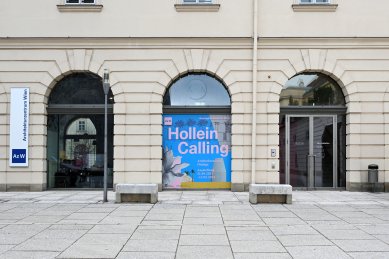
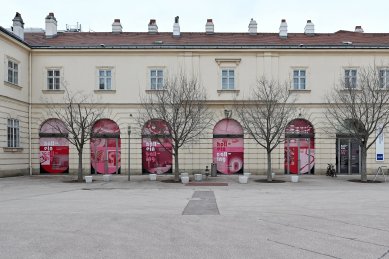
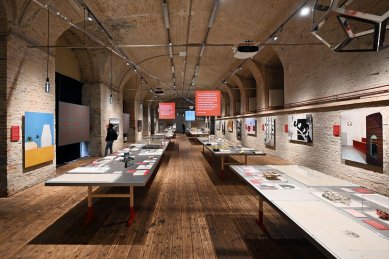
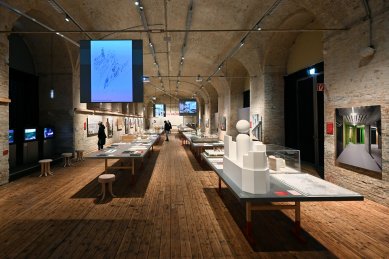
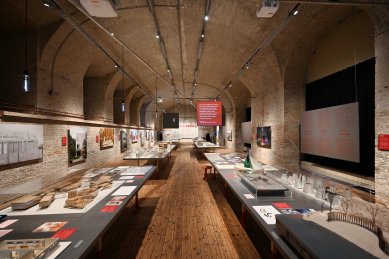
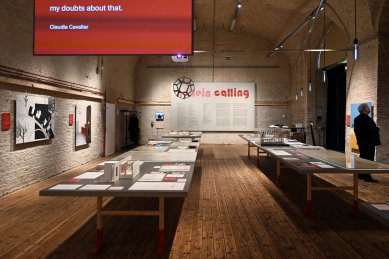
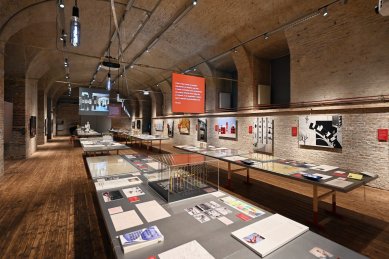
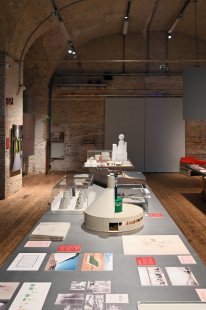
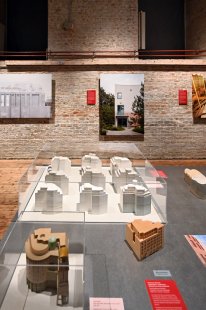
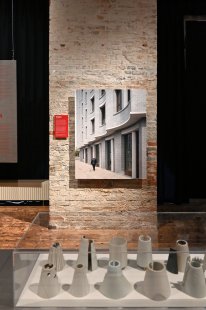
0 comments
add comment
Related articles
0
17.11.2025 | To the exhibition Anupama Kundoo at AzW
0
23.08.2021 | To the exhibition of Tatiana Bilbao at AzW
0
29.06.2020 | Balkrishna Doshi: Architecture for the People
0
01.07.2014 | To the exhibition of Hans Hollein at MAKo
0
22.06.2014 | Retrospective: HOLLEIN at the Vienna MAKl
0
27.05.2009 | Hans Hollein: Everything is Architecture (1967)











